I often photograph Mountain Bluebirds on my Montana trips but I’ve seldom had the opportunity to work with juveniles. That changed last week when we found a young bird hunting from a fence in early morning light.
1/3200, f/5.6, ISO 640, 500 f/4, 1.4 tc, natural light
At first it kept a wary eye out for any sign of danger coming from my pickup and seemed intrigued by the clicking noises from two cameras firing away.
1/1600, f/5.6, ISO 640, 500 f/4, 1.4 tc, natural light
But soon it began moving down the fence as it hunted for insects below.
1/1600, f/5.6, ISO 640, 500 f/4, 1.4 tc, natural light
Here it had spotted prey in the grasses beneath the fence line…
1/1600, f/5.6, ISO 640, 500 f/4, 1.4 tc, natural light
and did a free fall as it dropped toward the insect.
1/2000, f/5.6, ISO 640, 500 f/4, 1.4 tc, natural light
It then moved down the fence once again. I didn’t see this bird catch many insects and I suspect it was still honing its hunting skills.
Some folks don’t like barbed wire perches but I’m fine with it if it’s rusty and I also like the rustic old fence posts that are so prevalent in the area.
The Mountain Bluebird is very different in many ways from other thrushes.
- few other thrushes are cavity nesters
- it prefers much more open habitat than other thrushes
- a higher proportion of its diet consists of insects than most thrushes
- it often hovers while foraging which is atypical of thrushes
In fact, it has been suggested that the Mountain Bluebird resembles a scaled-down version of the American Kestrel more than it does a thrush.
Ron


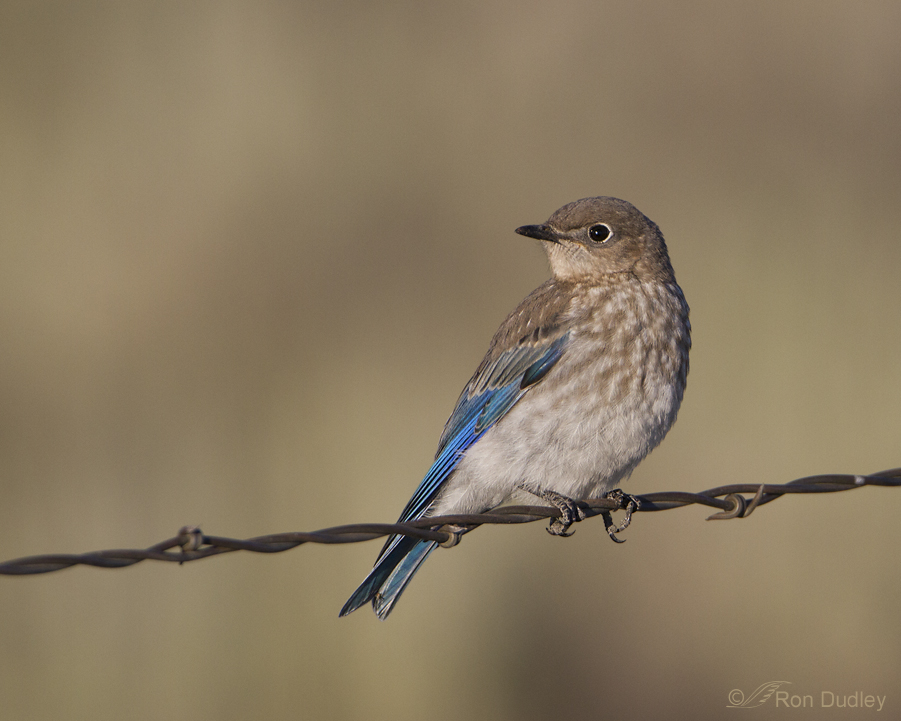
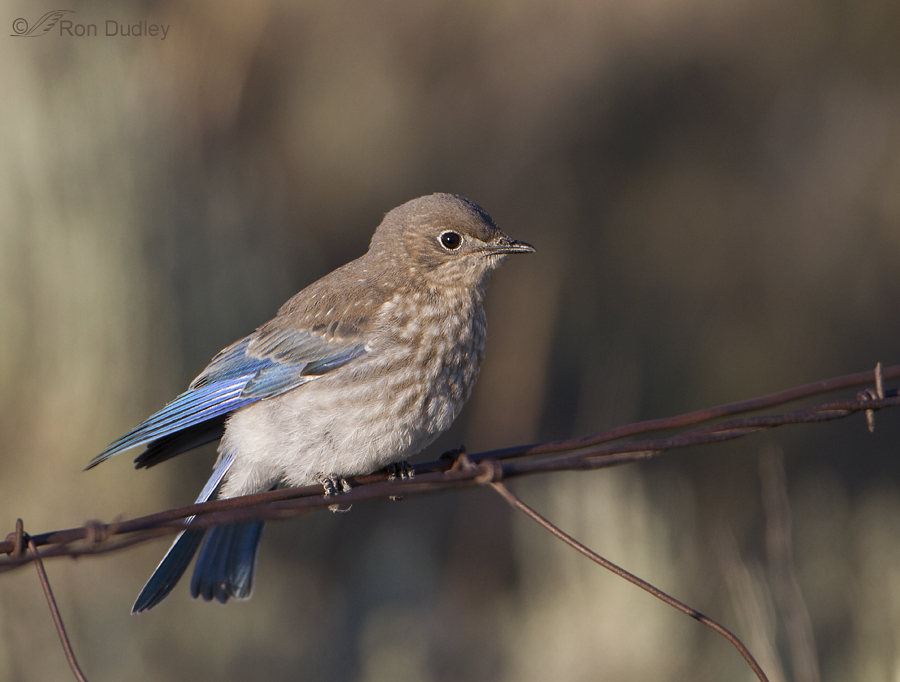
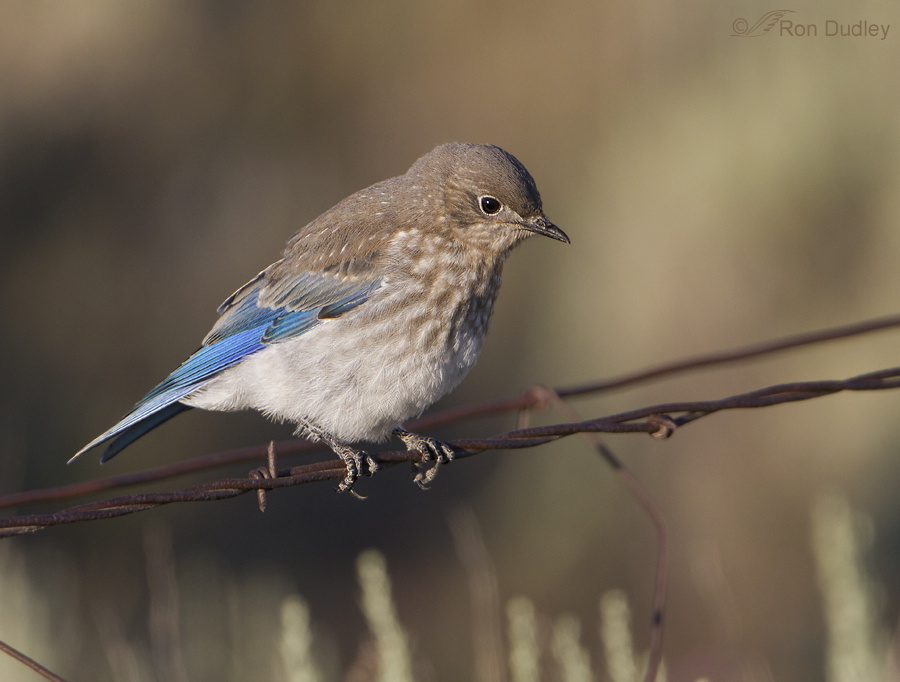
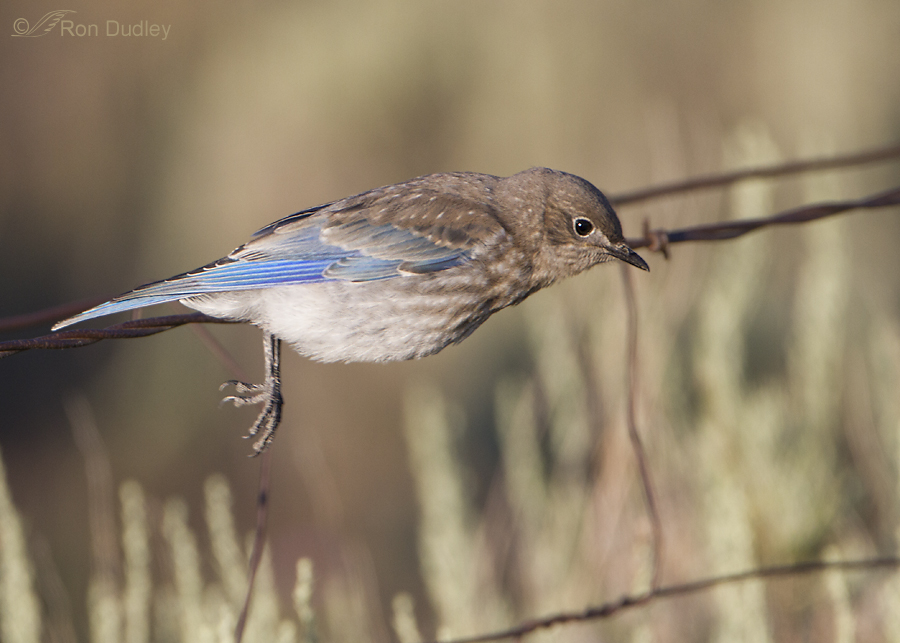
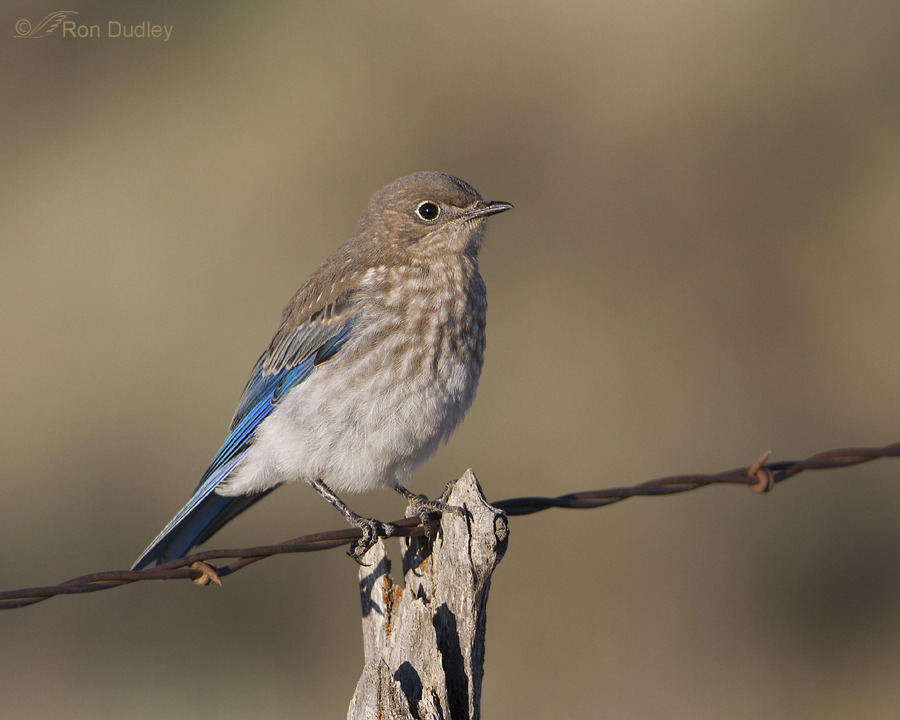
I love these little birds, their extraordinary color and ability to hover make them quite easy to spot! Thank you for these images.
Fantastic shots of a bird I’ve never seen! Thanks for sharing Ron!
very lovely, Ron!!!
Nice shots…do they get there blue wing feathers before thet get their blue feathers in other parts of their bodies? ..I think cardinals’ wings and faces turn red before their backs do. Their backs can be quite brown. Since they are brand new feathers these can be A very intense, very bright red…
Thanks, Patty. I’ve spent so little time with the juveniles that I don’t know the sequence of when the blue feathers appear.
Beautiful Photos and info.Ron .Really enjoy your story boarding ( if that’s the right word) gift. !
Thanks very much, John. And “story boarding” works perfectly well for me. Glad you enjoy it.
Interesting comparing Mountain Bluebirds with American Kestrels. I’ve watched Eastern Bluebirds, and provided a nest box for them, but have never seen the babies, and have never seen their hunting activity. I really like this series of photos. It’s amazing how the photos show the bird’s focus.
Thanks, Susan. I thought the comparison to a kestrel was interesting, too but when you think about it it does make some sense.